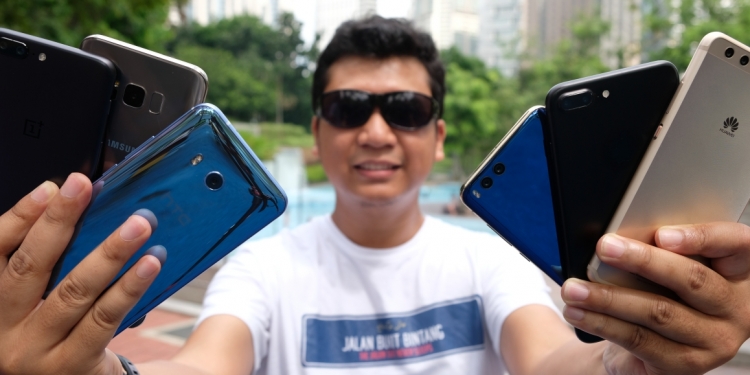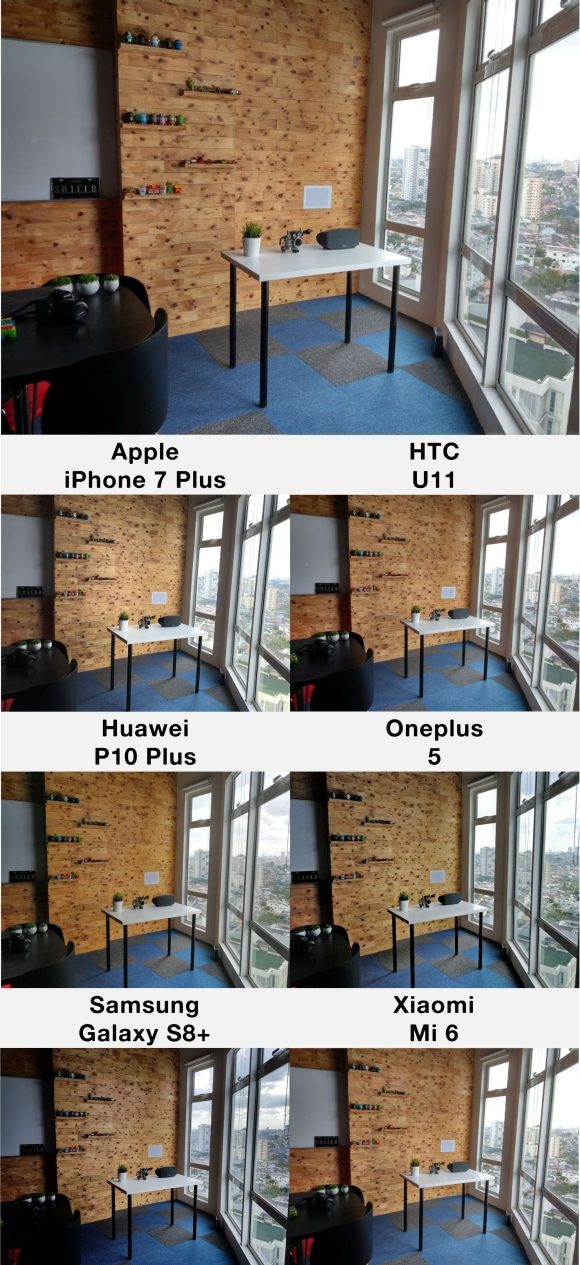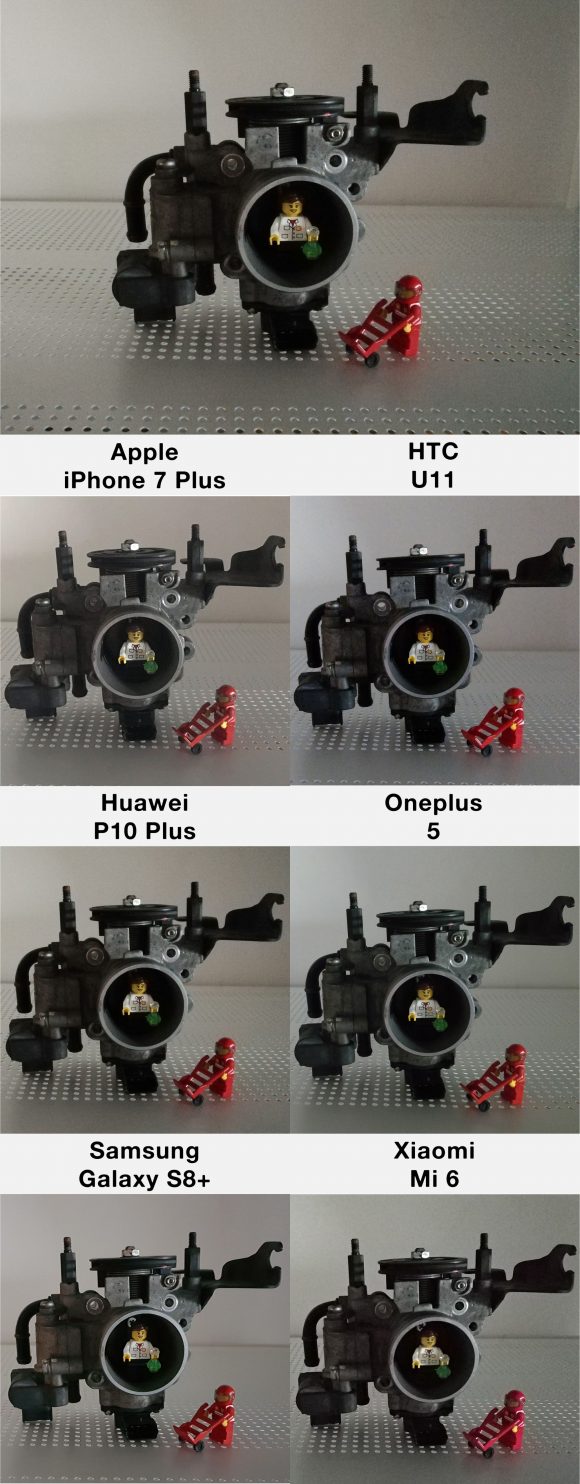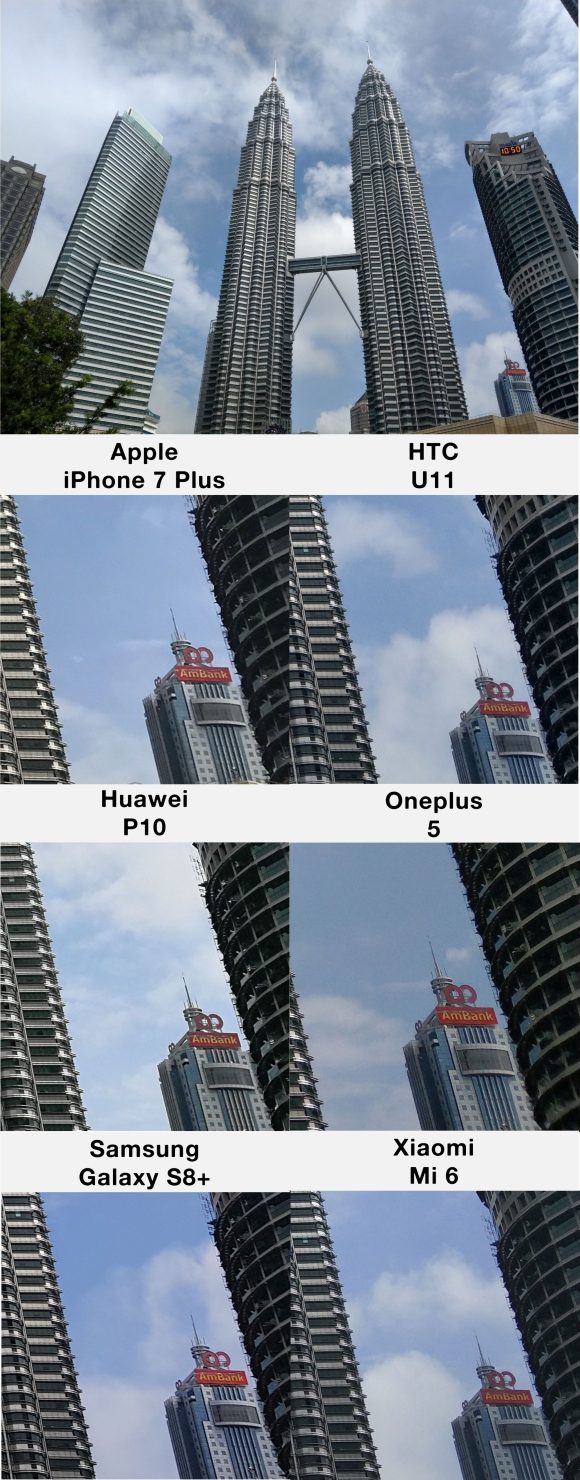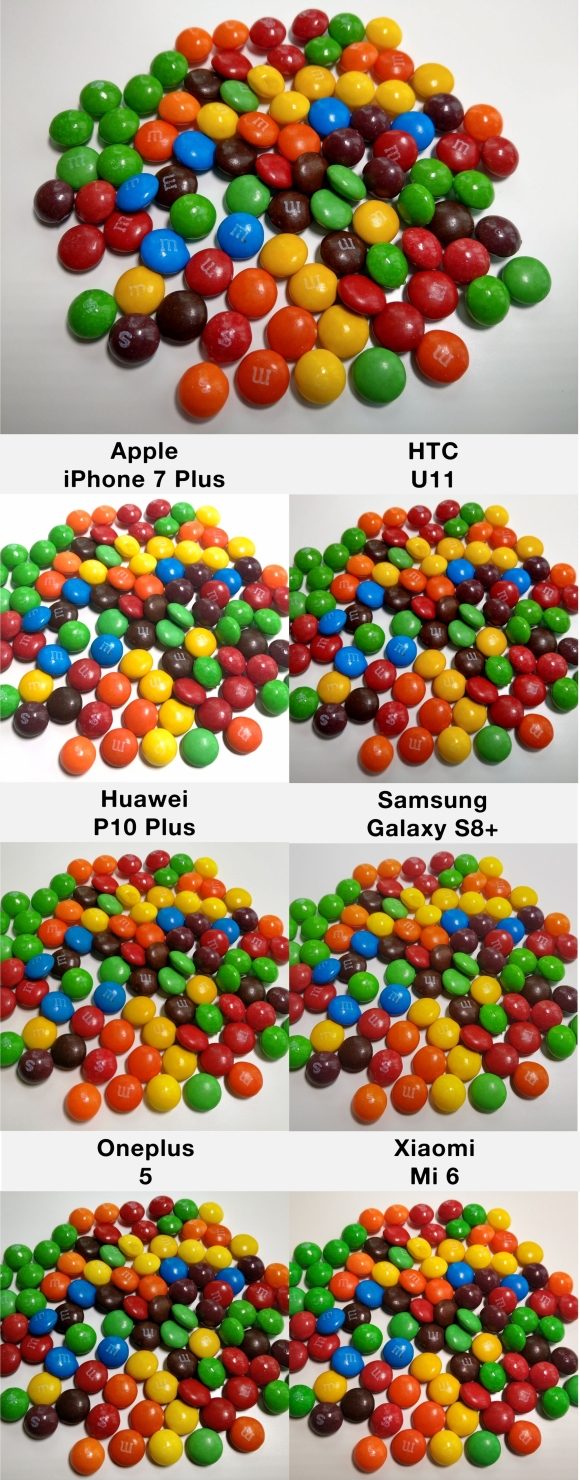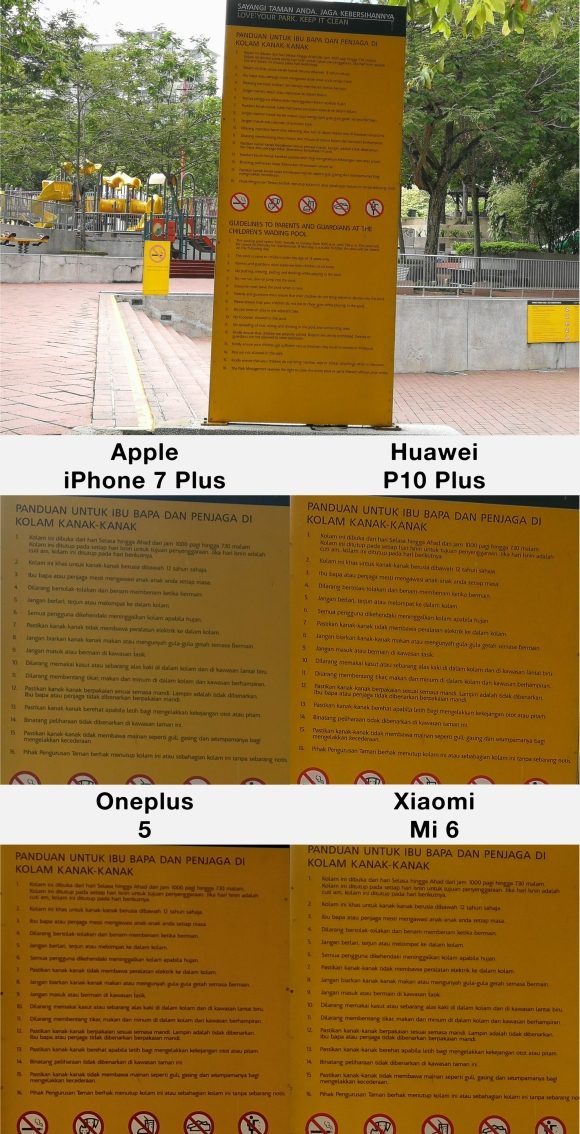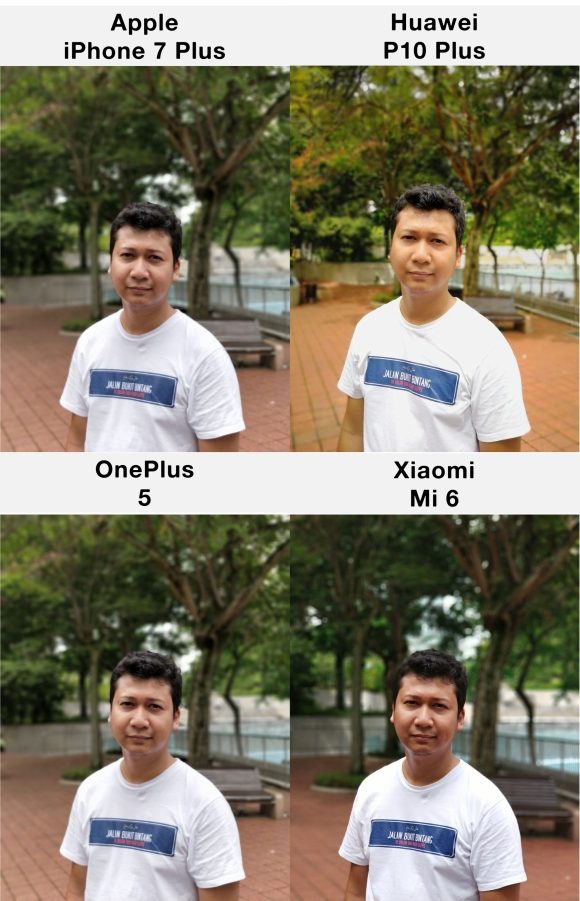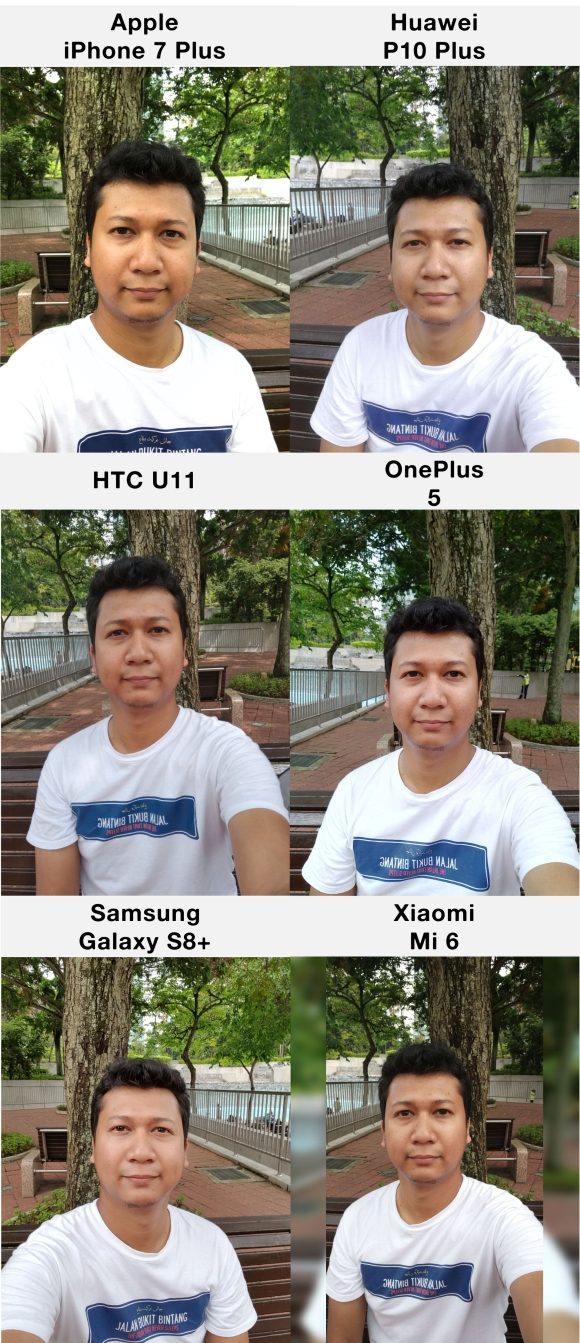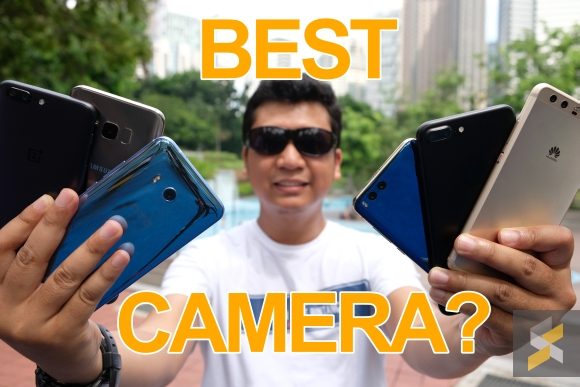
This post was originally published on 7th September 2017. It has been updated with the final results.
If there’s one thing people like more than getting new smartphones/gadgets/toys, it’s finding out that their smartphone/gadget/toy is better than everyone else’s. It’s human nature, or maybe just our egos, but the desire to turn everything into a stick measuring contest has been in our blood for generations.
Well, if one of the sticks you want to measure is your flagship smartphone’s camera performance, this article is for you. You seemed to love our last camera comparison, so we’re doing it again, only this time there’s a twist.
There will still be six participating smartphones, though some of the competition has been updated:
1. Samsung Galaxy S8+
2. Apple iPhone 7 Plus
3. Huawei P10 Plus
4. HTC U11
5. OnePlus 5
6. Xiaomi Mi 6
Yes, there is no Galaxy Note8 on the list because, at the time this test took place, we didn’t have that smartphone yet. But, with the exception of the secondary zoom lens, the Note8 has pretty much the same camera as the Galaxy S8+ so we think it’s a fair substitute.
We’ve also added another test to the list of different scenarios:
1. Colour reproduction
2. Dynamic range
3. Low light
4. Macro ability
5. Portrait Mode
6. Sharpness
7. Lossless Zoom
8. Selfie
This time, though, we’re mixing things up a little because we want you, the readers, to actually pick a winner for the best smartphone camera. In the second page of this article, we’ve set up a blind test that we’d like all of you to take and we will leave this test up for a whole week before we come back to it and tabulate the results.
Let the games begin!
[nextpage title=”Camera Comparison”]
Thanks for participating, this blind test is now over! The votes were collected from the 7-15 of September 2017. Head to the next page for the results!
[nextpage title=”Results”]
Here we go, after a week of collecting responses from you, we have our results. First, I’d like to thank all 1,010 of you for participating in this blind test and I hope the results will give you some interesting insight into what the general public likes when it comes to smartphone photos.
I also took the test blind — without knowing which phone was which until after I finished the test — so I’ll be putting some of my thoughts in as well.
But enough around the bush now, onward to the results!
Macro
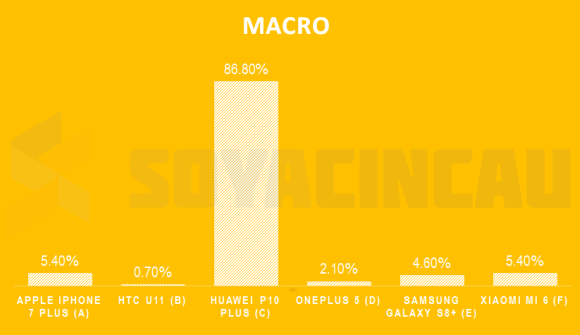
This, was perhaps the most straightforward test. The best image is simply the one that is sharpest and most in focus at the shortest distance. Clearly, from the table it is the Huawei P10 Plus. Why anyone chose anything else, I’m not very sure. If you’re one of those people who chose a device other than the Huawei P10 Plus, let me know in the comments below why you did so.
One interesting thing to note is that in our last test, the Galaxy S8 was easily the winner in this test so it’s a bit peculiar that this time the S8+ falls behind.
WINNER: Huawei P10 Plus
HDR
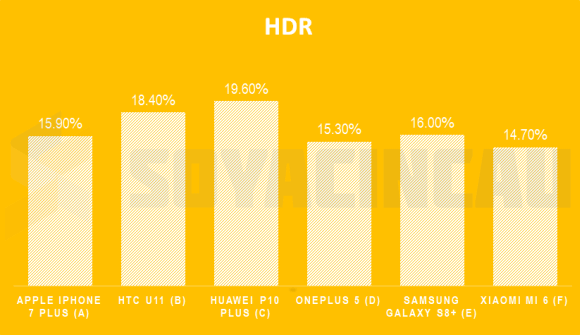
Next, we’ve got the HDR test. This is a test to see which phone has the best HDR capabilities built in so ideally, you’d see an evenly lit image without losing details in the highlights or shadows. The results were far closer than the first test which really shows different people have different ideas of what makes a good image.
Personally, I chose C — the Huawei P10 Plus — because even though the sky was blown out, the details in the buildings were still visible. Huawei’s P10 Plus also handled the shadows the best, in my opinion. A close second for me would have been the HTC U11, which the results also seem to agree with.
WINNER: Huawei P10 Plus
Low Light
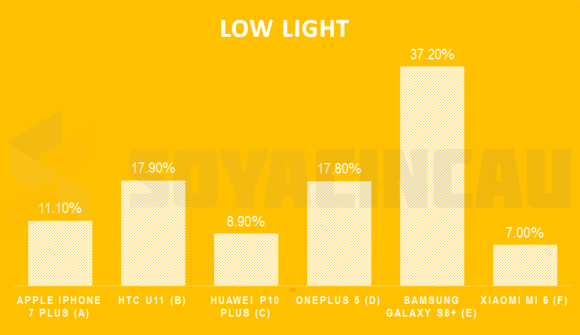
Moving on, we’ve got the low light test, which the Samsung Galaxy S8+ pretty much dominated — to nobody’s surprise. Samsung has been nailing low-light performance lately. I personally chose E — the Samsung Galaxy S8+ — too because there was almost no noise in the dark wall in the background while the primary subject remained sharp with plenty of details.
WINNER: Samsung Galaxy S8+
Sharpness
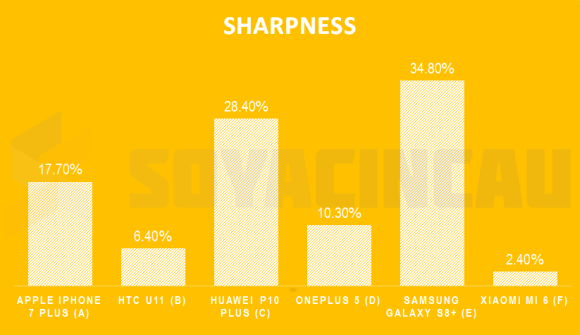
Initially, I thought this would be a pretty straightforward test too, but it turned out to be more complicated than that I expected. It just goes to show how different phones with different image processing handles sharpness and clarity. Here, the Samsung Galaxy S8+ puts another notch on its belt with a win ahead of second place Huawei P10 Plus.
I also picked the Samsung Galaxy S8+ because everything looked sharp without looking over-processed. I thought the AmBank text in the S8+’s photo also looked the best.
WINNER: Samsung Galaxy S8+
Colour reproduction
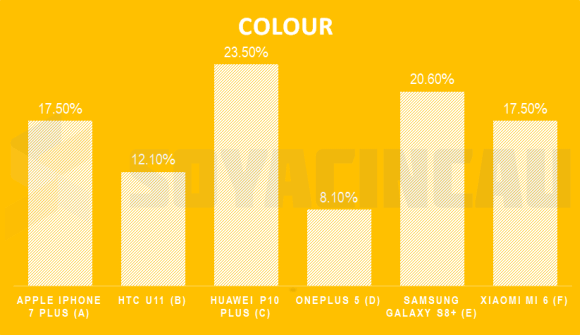
After the HDR test, this is the second most split our audience has ever been. But there is a consensus here and that’s that the OnePlus 5 did the worst in our colour test. Whoops. In any case, the winner, by a rather slim margin, is the Huawei P10 Plus, pulling 23.5% of all votes leading the Samsung Galaxy S8+ which only managed to garner 20.60% of the votes.
For me, it was a toss up between the HTC U11 and the Xiaomi Mi 6. I liked the U11 because it looked very realistic and probably was the closest to the original colours to my eyes. However, I eventually picked the Mi 6 because I thought the higher contrast and vibrance would look better when uploaded to social media sites. I’m not sure why my brain’s thought process was like that, but it was. To me, the clear losers were the iPhone 7 Plus and OnePlus 5, but I guess 17.5% of you liked the blown out white surface in the background.
WINNER: Huawei P10 Plus
Zoom
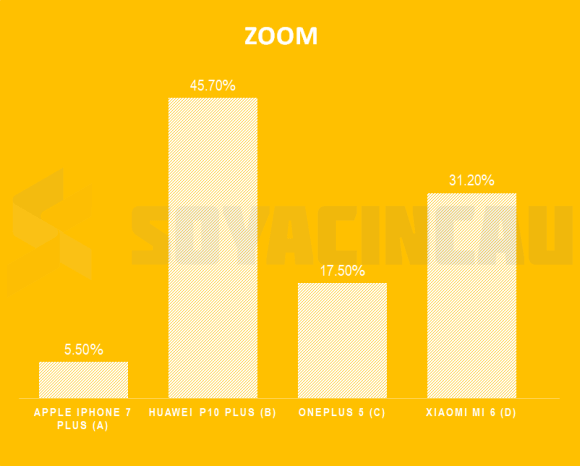
And we have another win for the Huawei P10 Plus — and by quite a big margin — netting nearly half of all votes cast. This is probably the only test where I strongly disagree with what you guys voted for. My winner here was the Xiaomi Mi 6 because it was sharp but also looked realistic. There’s no denying that Huawei’s image was sharp, but it looks so over-processed and if you look closely you can even see some colour fringing around the edge of the text.
But well, the majority wants what the majority wants, and this is a democracy after all.
WINNER: Huawei P10 Plus
Portrait
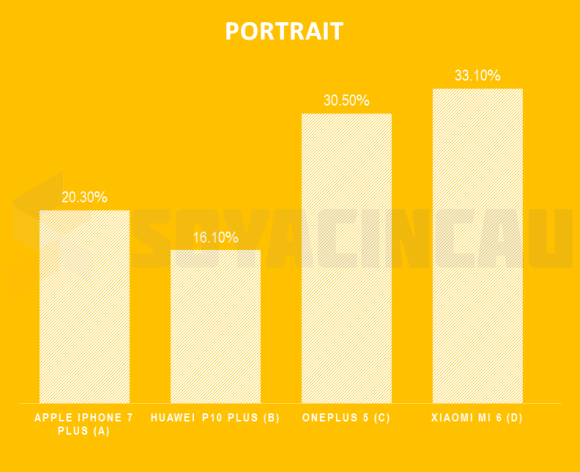
Here we have the second and final dual-camera exclusive test — portrait mode. To my surprise, Xiaomi’s Mi 6 actually won, albeit with quite a small margin. It’s worth noting that Huawei doesn’t actually have a zoom lens for portrait mode, which is why its image performed the worst and also why my colleague’s nose looks 2X larger than it actually does because of the barrel distortion from the wider lens. One other surprising result was that the OnePlus 5 clinched second ahead of the iPhone 7 Plus despite all the initial criticism the phone received for its Portrait Mode implementation.
I also chose the Xiaomi Mi 6 because I liked the way it handled the lighting that was available, the contrast was pleasing to my eyes and, I thought it had the nicest bokeh with little spheres of light in the space between the trees. However, Xiaomi’s Mi 6 did mess up a little with their seam near the top-left of my colleague’s head where it’s blurred when it really shouldn’t. Still, I liked the Mi 6’s image the most and, as it turns out, so do most of you.
WINNER: Xiaomi Mi 6
Selfie
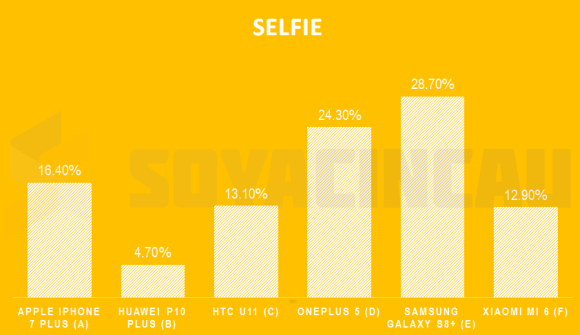
Finally, we come to the front camera test and this test just proves that megapixels don’t mean much when it comes to producing a pleasing selfie. Our winner is the Samsung Galaxy S8+, which only has an 8MP selfie shooter. Despite that, it still beat both the OnePlus 5 and HTC U11’s 16MP selfie shooter, with the U11 also falling behind Apple’s iPhone 7 Plus.
My winner was the HTC U11 because, for the most part, I liked its colour and the detail of the background. But, I guess I made the fundamental selfie shooter mistake: The most important thing the phone needs to get right is the person’s face. And yes, I’ll admit, my colleague’s skin tone isn’t tinged red so I’ll concede defeat.
WINNER: Samsung Galaxy S8+
Final score tabulation
After tabulating all the results, this is what the final score sheet looks like:
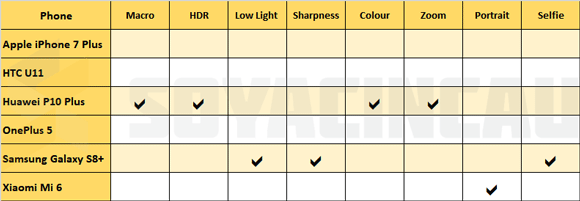
Congratulations to the Huawei P10 Plus for having the most wins (4)! This makes the Huawei P10 Plus the overall winner for SoyaCincau’s blind test camera comparison.
Now, what can we learn from this? Well, if these tests are any indication, beauty really does lie in the eye of the beholder. What I find looks good will probably differ from what you think looks good so the best way to judge camera quality is to have a look for yourself. This is why we usually don’t harp on image quality too much in my reviews, and instead leave full-resolution images straight out of the camera for you to judge for yourself. What final images can’t tell you, though, is what a camera feels like to shoot with, so you can rely on us to tell you whether a camera feels sluggish or not.
It was also rather surprising that the iPhone 7 Plus didn’t win a single test even though many tell me that its camera can easily compete with the best of 2017s flagships. I guess, that’s not entirely true anymore. In any case, Apple’s 2017 contender is the iPhone 8/8 Plus and iPhone X, and we can’t wait to get our hands on those phones to give their cameras a good spanking.
What do you guys think of these results? Let me know in the comments below!

